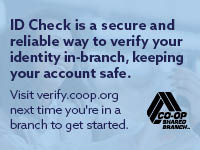Signature loans take less time for a bank to process than other types of loans because the lack of collateral means that the loan underwriter bases the decision to approve or decline the loan purely on your own financial situation. Not all banks offer signature loans, and bankers may direct customers to apply for credit cards instead. When signature loans are available, you must provide your lender with income verification documents and have a good credit score for approval.
Identification
-
Before you can submit a signature loan application, you must first identify yourself to the loan officer. By law, every bank must have written procedures in place that employees must follow in order to identify people who are attempting to open new accounts. Typically, you must show the loan officer at least one form of government-issued identification such as a state ID card or your passport. You must also provide the banker with your name, date of birth and Social Security number, as the banker uses that information to check your credit report.
Credit Score
-
When you apply for a secured loan, the lender has to contend with the risk that you might default on the loan, but if you do fail to repay the debt, the lender can cover some or all of its losses by selling the collateral. With an unsecured debt, the lender has little recourse if you default, which means that signature loans are riskier for banks. Therefore, do not expect to qualify for a signature loan if you have poor credit — in fact, many banks only offer these loans to people with credit score of 720 or higher. If you have a mediocre credit score, you should attempt to pay down your debts and take other measures to improve your score before applying for a signature loan.
Debt to Income
-
The lender uses your credit score to verify your personal information and to review your past credit history, but lenders also check your credit report to determine your debt-to-income (DTI) ratio. Your DTI consists of your debt payments, shown as a percentage of your gross income. Creditors file monthly reports with the credit bureaus that include details of your debts and debt payments, and lenders use this information to see how much of your income goes toward covering debts. You usually cannot take out a signature loan if your DTI exceeds 36 percent. You must prove your income by giving the lender your last two years of tax returns and W2s and your most recent pay stub.
Business
-
You can also take out signature loans for your business, in which case you must provide the bank with the same information that you would provide for a personal loan. Additionally, you must provide the lender with your business license, articles of incorporation, general partnership agreement or other applicable documents that show you have registered your business with the sate. Everyone with a 20-percent ownership stake in the business must sign as a guarantor on the loan and provide the bank with a personal financial statement that lists their assets and liabilities. You also need to give the bank the business’ recent bank statements and a cashflow analysis that shows the income and expenses of the business.
H/T Source: eHow.com


